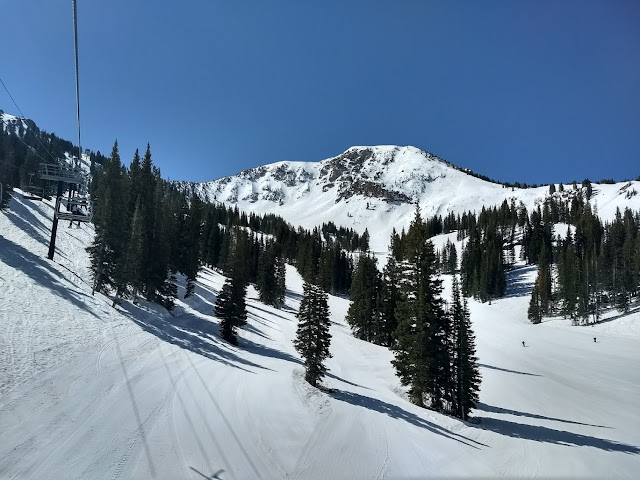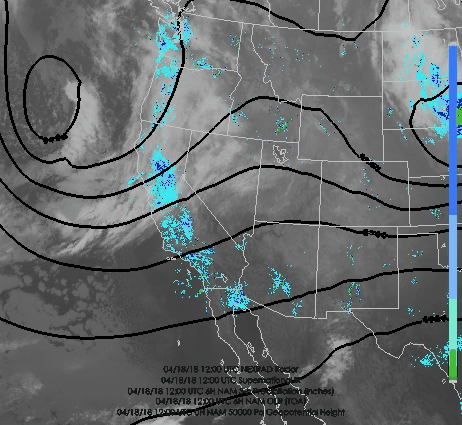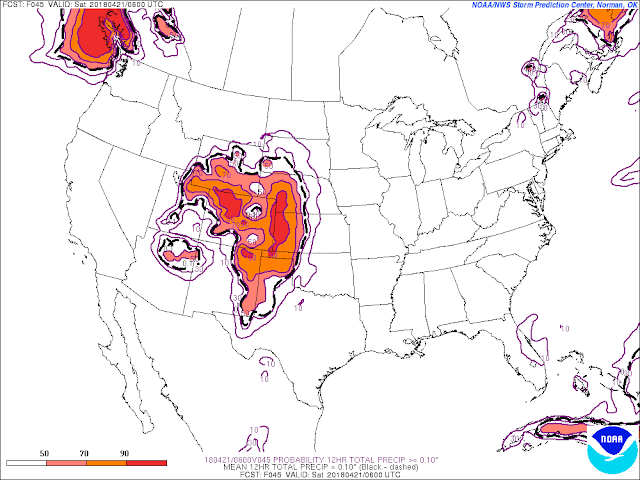It has been a long cool season characterized by frequent doldrums, but today my cup runneth over.
Let's talk first about what happened overnight and some of the complexities of cyclone and frontal evolution over the Intermountain West.
With an approaching trough from the west, one often sees a trough develop over the Intermountain West, typically along an axis running from the high Sierra northeastward across northern Utah. That was the case last night, which featured a very well developed Intermountain Cyclone, as well as a Pacific cold front that was distinct from this feature and pushed across northern Nevada.
As can be seen in the HRRR-derived analysis below, the Intermountain cyclone progressed northeastward across northern Utah overnight, with the cold front penetrating into the state and eventually overtaking the concomitant trough.
This resulted in some strange time series in which the wind shifted to northwesterly before the arrival of the cold front. For example, at Badger Island along the west shore of the Great Salt Lake, the flow shifted from ENE to NNW around 0900 UTC as the low center tracked to just to it's south. However, this was not the surface cold front, which arrived shortly after 1000 UTC, which snapped the wind sharply to NW and was followed by an increase in wind speeds that eventually reached over 35 mph with gusts to near 50.
This highlights the importance of using the "forecast funnel" and the need to understand what is happening on the larger scales before trying to understand what is happening locally.
Another issue this morning is that the precipitation dynamics are not favoring anything that looks like the classical cold-frontal precipitation structures that you see in elementary textbooks and most of which are derived from the Norwegian Cyclone Model, which is nearly 100 years old (cold front at left).
 |
| Source: Bjerknes and Solberg (1922) |
The Norwegian Cyclone Model was a great advance, but there can be large deviations from that model as far as precipitation is concerned. Note today how disjointed the precipitation is from the cold front (1300 UTC/0700 MDT analysis and radar below). This is because the cold-front is shallow at it's leading edge and the pre-frontal airmass is dry, so that the strong ascent at the leading nose is unable to generate precipitation. Instead, precipitation lags the front and is a result of several factors, including the presence of deeper pacific moisture and forcing associated with the upper-level trough.
The radar loop below shows how things have filled in nicely along the northern and central Wasatch Front through 1405 UTC (0805 MDT). At that time, a sharp contrast in weather existed from northern to southwest Salt Lake County, with the latter still dry due to the position of the precipitation and some shadowing by the Oquirrhs.
Similarly, at this time, it was not only dry in Park City, but you could see shadows from the sun!
 |
| Source: UDOT |
The models are advertising the frontal precipitation to move through today, with the event becoming a more "orographic" one later today, with precipitation generated by forced ascent as the northwesterly flow encounters the Wasatch Range. Temperatures will also be dropping, so rain will be turning to snow on campus this morning (it's mixing in as I write this at 0830 MDT).

The latest weather summary from the NWS is provided below. Get updated forecasts at https://www.weather.gov/slc/.
 |
| Source: NWS |
For the mountains, this is still looking like a pretty good spring storm. The time-height section for Salt Lake City shows the frontal passage this morning, and then periods of moist, unstable, NW flow through tomorrow morning.
The latest NWS forecast for the upper Cottonwoods is below and tells the tale fairly well.
 |
| Source: NWS |
The post-frontal stuff later today and tonight is always a bit of a crapshoot. Right now, it looks pretty good and I'd say the odds of deep powder tomorrow are high. If you are skiing later today be aware that there is a chance of thunderstorms and keep and eye to the sky. Tomorrow, the quality of skiing may be somewhat dependent on winds as the models are advertising fairly strong 700-mb flow through the period.

























































